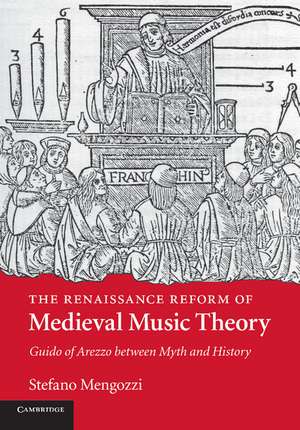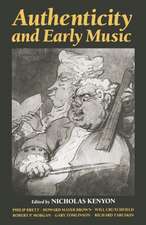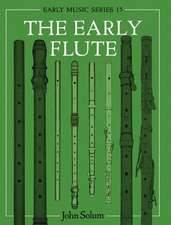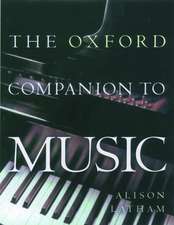The Renaissance Reform of Medieval Music Theory: Guido of Arezzo between Myth and History
Autor Stefano Mengozzien Limba Engleză Paperback – 20 aug 2014
| Toate formatele și edițiile | Preț | Express |
|---|---|---|
| Paperback (1) | 339.57 lei 6-8 săpt. | |
| Cambridge University Press – 20 aug 2014 | 339.57 lei 6-8 săpt. | |
| Hardback (1) | 703.11 lei 6-8 săpt. | |
| Cambridge University Press – 10 feb 2010 | 703.11 lei 6-8 săpt. |
Preț: 339.57 lei
Nou
Puncte Express: 509
Preț estimativ în valută:
64.99€ • 67.13$ • 54.08£
64.99€ • 67.13$ • 54.08£
Carte tipărită la comandă
Livrare economică 26 martie-09 aprilie
Preluare comenzi: 021 569.72.76
Specificații
ISBN-13: 9781107442573
ISBN-10: 1107442575
Pagini: 306
Ilustrații: 28 b/w illus. 19 tables 3 music examples
Dimensiuni: 170 x 244 x 16 mm
Greutate: 0.49 kg
Editura: Cambridge University Press
Colecția Cambridge University Press
Locul publicării:New York, United States
ISBN-10: 1107442575
Pagini: 306
Ilustrații: 28 b/w illus. 19 tables 3 music examples
Dimensiuni: 170 x 244 x 16 mm
Greutate: 0.49 kg
Editura: Cambridge University Press
Colecția Cambridge University Press
Locul publicării:New York, United States
Cuprins
Introduction: Guido's hexachord: old facts and new questions; Part I. Guidonian Solmization in Music Theory and Practice: 1. Guido's musical syllables: conflicting views from modern historiography; 2. Inside the gamut: Guido of Arezzo and Hermannus Contractus on the major sixth; 3. Hands off! Singing without syllables in the Middle Ages; 4. The making of a system: medieval music semiotics in transition; Interlude: All hexachords are 'soft'; Part II. Reforming the Music Curriculum in the Age of Humanism: 5. Back to the monochord: church reform and music theory in the 15th century; 6. Normalizing the humanist: Johannes Gallicus as a 'Follower of Guido'; 7. Gafori's hand: forging a new Guido for a new humanist culture; 8. Hexachordal theory and deductive method in Gioseffo Zarlino's Dimostrationi harmoniche (1571); Epilogue: Discarding the Guidonian image of early music; Bibliography.
Recenzii
'While even musicologists familiar with the subject may find the history of musical theories in the first part of the text a challenge, the undaunted reader will find rewards in the later chapters.' Susan Forscher Weiss, The Peabody Institute of The Johns Hopkins University
'It is an ambitious, thought-provoking study of an important topic within a milieu that was full of controversy, transition, and renegotiation, brought to the fore here with much insight.' Nancy van Deusen, Renaissance Reform of Medieval Music Theory
'It is an ambitious, thought-provoking study of an important topic within a milieu that was full of controversy, transition, and renegotiation, brought to the fore here with much insight.' Nancy van Deusen, Renaissance Reform of Medieval Music Theory
Notă biografică
Descriere
A detailed study of the sight-singing method introduced by the 11th-century monk Guido of Arezzo, in its intellectual context.
















